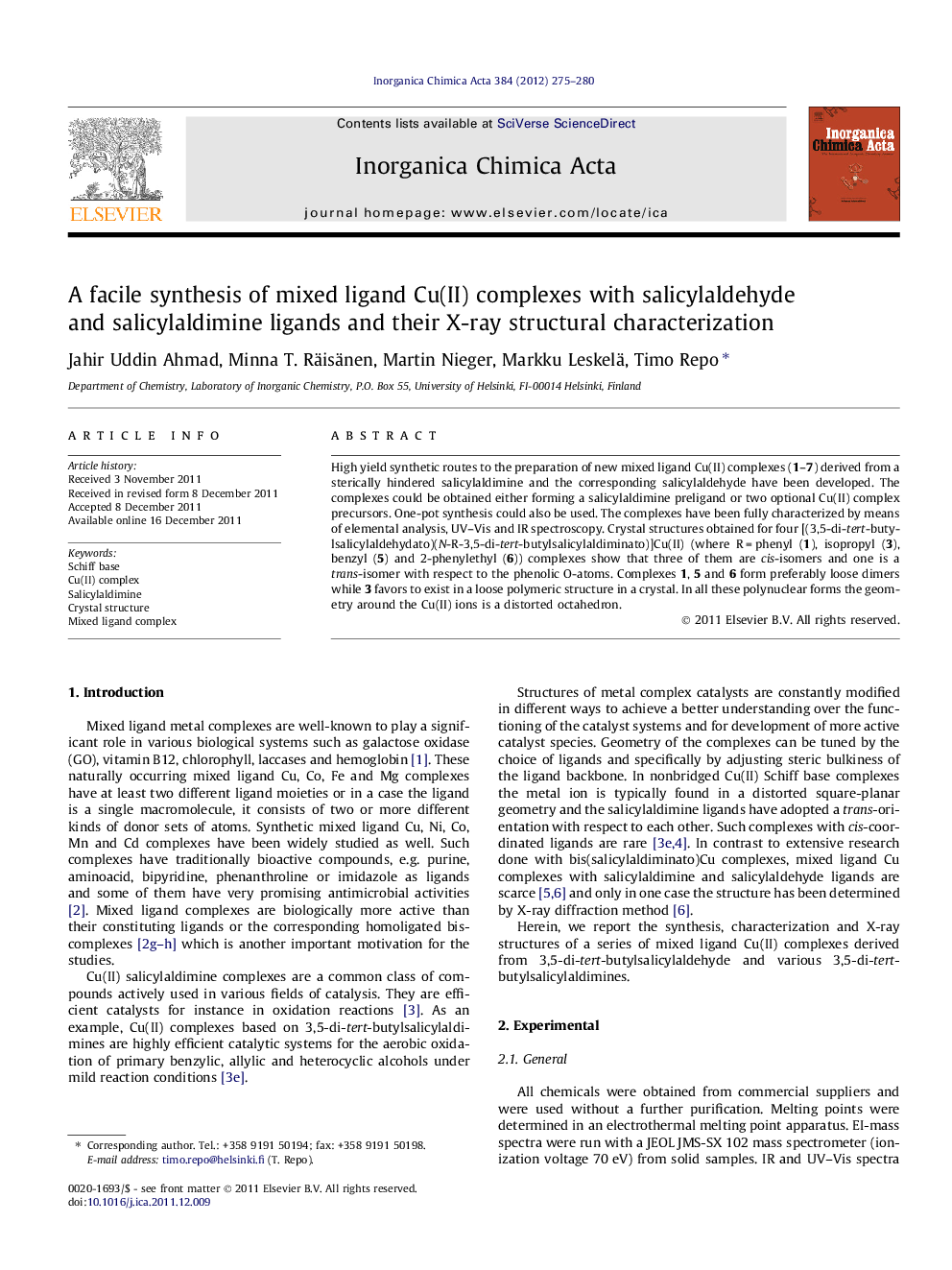| Article ID | Journal | Published Year | Pages | File Type |
|---|---|---|---|---|
| 1308649 | Inorganica Chimica Acta | 2012 | 6 Pages |
High yield synthetic routes to the preparation of new mixed ligand Cu(II) complexes (1–7) derived from a sterically hindered salicylaldimine and the corresponding salicylaldehyde have been developed. The complexes could be obtained either forming a salicylaldimine preligand or two optional Cu(II) complex precursors. One-pot synthesis could also be used. The complexes have been fully characterized by means of elemental analysis, UV–Vis and IR spectroscopy. Crystal structures obtained for four [(3,5-di-tert-butylsalicylaldehydato)(N-R-3,5-di-tert-butylsalicylaldiminato)]Cu(II) (where R = phenyl (1), isopropyl (3), benzyl (5) and 2-phenylethyl (6)) complexes show that three of them are cis-isomers and one is a trans-isomer with respect to the phenolic O-atoms. Complexes 1, 5 and 6 form preferably loose dimers while 3 favors to exist in a loose polymeric structure in a crystal. In all these polynuclear forms the geometry around the Cu(II) ions is a distorted octahedron.
Graphical abstractHigh yield synthetic routes to the preparation of new mixed ligand Cu(II) complexes, characterized by elemental analysis, UV–Vis and IR spectroscopy, are presented. Crystal structures obtained for four complexes showed that three of them are cis-isomers and one is a trans-isomer with respect to the phenolic O-atoms.Figure optionsDownload full-size imageDownload as PowerPoint slideHighlights► High yield synthetic routes to mixed ligand Cu(II) complexes. ► The complexes have salicylaldimine and the corresponding aldehyde ligands. ► Single crystal structures of four complexes are determined crystallographically. ► Three complexes are cis- and one is a trans-isomer with respect to the phenolic O.
